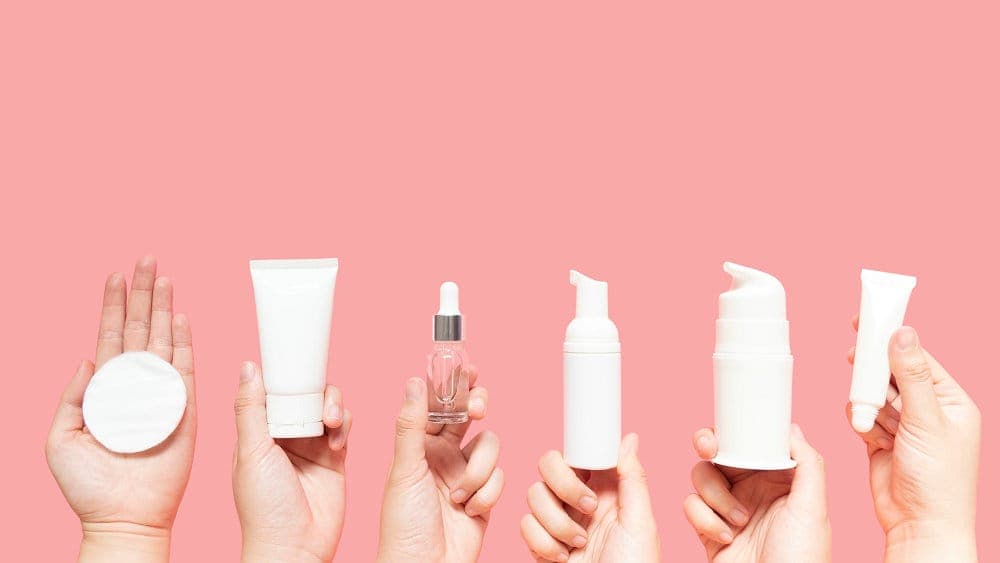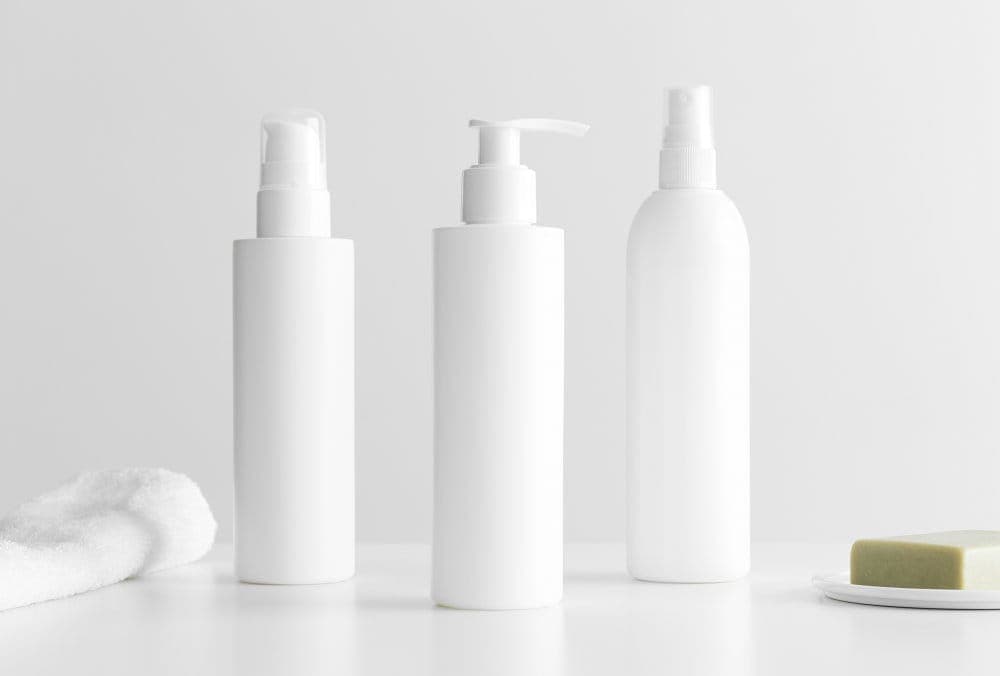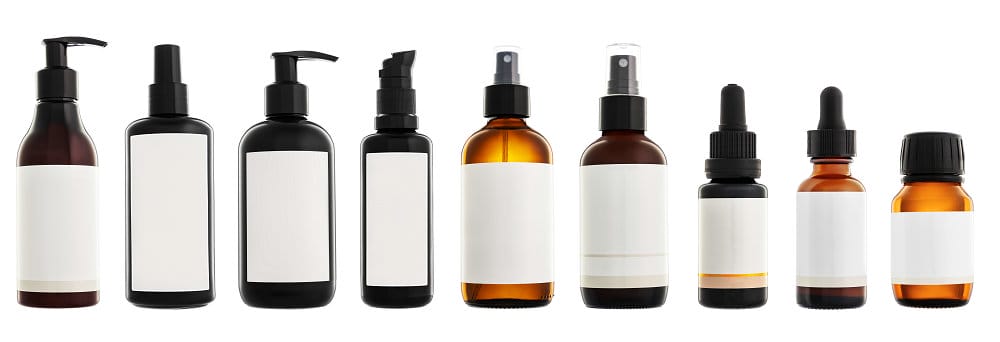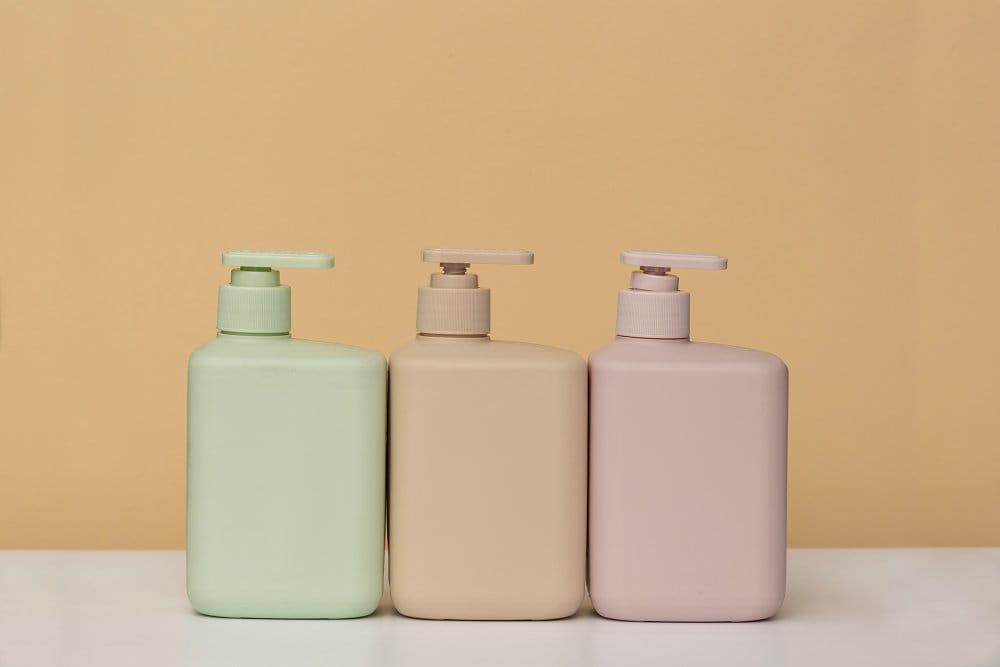Printing on plastic containers has become an essential part of product packaging for many industries, allowing brands to communicate important information and create visually appealing designs. Various methods and technologies are available for printing on plastic, each with advantages and considerations. Understanding the basics of printing on plastic and choosing the right equipment can help ensure a successful outcome for your project.

When preparing to print on plastic containers, it is essential to consider factors such as ink adhesion and the type of plastic material, as these will impact the quality and durability of the final result. Regulations and codes in plastic printing must also be considered, particularly regarding printing expiration dates, barcodes, and other essential product information. Additionally, exploring printed plastic container applications and uses can further inspire your project.
Key Takeaways
- Understand the various methods and considerations for printing on plastic containers.
- Choose the right equipment and prepare your plastic correctly for optimal results.
- Consider regulations, codes, and potential applications when designing printed plastic containers.
Understanding the Basics of Printing on Plastic

The Basics of Plastic Containers
When printing on plastic containers, it’s essential to understand the type of plastic used. Some common plastic materials include polystyrene, polypropylene, polyester, and polyvinyl chloride (PVC). Each material has unique characteristics, which can affect the printing process and the final results. For example, some plastics may require pre-treatment to ensure proper ink adhesion.
Choosing the Right Equipment for Printing on Plastic
When printing on plastic containers, the choice of equipment is crucial for achieving the desired quality and efficiency. This section will discuss three printing machines suitable for printing on plastic containers: Continuous Inkjet (CIJ) Printers, Laser Systems, and UV Printers.
Continuous Inkjet (CIJ) Printer
A Continuous Inkjet (CIJ) Printer is an excellent choice for printing on plastic containers due to its versatility, reliability, and efficiency. This type of printer is ideal for high-speed production lines and can print on various materials, including PVC, PET, and HDPE. The CIJ printer creates a continuous stream of ink droplets that are electrically charged, allowing for accurate and precise printing on irregular surfaces like curved and textured containers.
Key benefits of using a CIJ printer for plastic containers include:
- High-speed printing capability
- Suitable for various plastic materials
- Ability to print on irregular surfaces
- Low maintenance requirements
Laser Systems
Laser systems offer a very different approach to printing on plastic containers. Instead of ink, laser printers use a focused beam of light to either ablate or remove a material layer to reveal the desired design. Different types of laser systems, such as CO2 and fiber lasers, are more suitable for different materials. Laser systems are ideal for creating high-resolution and durable prints on plastic containers.
The advantages of using laser systems for printing on plastic containers are:
- High-resolution and long-lasting print
- No consumables like ink or solvents required
- Minimal waste generation
- Environmentally friendly compared to CIJ printers
UV Printers
UV Printers use ultraviolet (UV) light to instantly cure and bond special UV inks to the surface of plastic containers. This ensures the ink instantly adheres to the container, resulting in a high-quality, durable, and scratch-resistant print. UV printers are an excellent choice when printing plastic containers requiring high-quality images, graphics, or text, as they offer excellent color reproduction and print clarity.
Some benefits of UV printing on plastic containers are:
- High-quality, vibrant, and clear prints
- Durable and scratch-resistant
- Instant curing and bonding process
- Suitable for a range of plastic materials
Each type of equipment has its advantages and limitations. Therefore, depending on your specific needs and requirements, you can choose the most suitable option for printing on your plastic containers.
Preparing Your Plastic for Printing

Caring for Your Plastic Before Printing
Before you start printing on your plastic containers, it’s essential to care for the plastic surfaces properly. Begin by thoroughly cleaning the surfaces to remove any dust or residue. Doing so will ensure that the printed designs adhere well to the containers. For curved surfaces like plastic bottles, use a soft cloth and a gentle cleaning solution to prevent any scratches on the plastic surface. On flat plastic sheets, wipe in one direction to eliminate any streaks.
Handling the plastic containers with care is equally important. Avoid touching the printing surface with your fingers or using sharp objects that could damage the plastic.
Methods to Print on Different Surfaces
There are numerous methods available for printing on different types of plastic surfaces. Here are a few of the most common techniques:
- Inkjet printing: A popular option for printing on flat plastic sheets, inkjet printing provides high-quality and precise images. It is often used for printing on materials such as Polyvinyl Chloride (PVC). Use high-quality, specialized inks that adhere well to plastic surfaces.
- Screen printing: This method works well for flat and curved plastic surfaces. A stencil transfers ink onto the plastic container, creating a vibrant, transparent design. Screen printing is an excellent option for large-scale production, allowing for a faster and more efficient process.
- Thermal transfer printing: Thermal transfer printing is ideal for flat sheet plastic materials as it uses heat to transfer an image onto the surface. This method is perfect for precise prints and is commonly employed for printing labels, barcodes, and other essential information on plastic containers.
- Laser printing: Laser printing works on a wide range of plastic surfaces, including flat and curved containers. It uses a laser beam to etch the design onto the plastic, creating a permanent and long-lasting print. However, laser printing can be expensive and unsuitable for small-scale projects.
Ultimately, the method you choose to print on your plastic containers will depend on the surface type, desired print quality, and budget. Each technique has advantages and limitations, so carefully consider your requirements before selecting the most suitable printing method for your project.
Ink Adhesion and Plastic Containers
Ink Adhesion on Plastic
Ink adhesion is a crucial aspect of printing on plastic containers. A proper bond between the ink and the container’s surface ensures a durable, high-quality print that withstands handling, transportation, and environmental factors.
Polypropylene (PP) and polyethylene terephthalate (PET) are two common types of plastic used in containers. Both materials have unique properties and require specific preparation techniques for proper ink adhesion. For instance, water-based inks may not work well with plastic surfaces, but solvent-based inks can provide a waterproof and almost scratch-proof print on plastic containers.
Factors Affecting Ink Adhesion
There are various factors to consider for achieving optimal ink adhesion on plastic containers:
- Surface treatment: The plastic surface needs to be adequately prepared for ink adhesion. One standard method is flame treatment, where a gas-air mixture rich in oxygen promotes better ink-wetting on the surface. This treatment enhances the surface’s chemical bonding capacity, ensuring adequate ink adhesion to materials like PP and PET.
- Type of ink: As previously mentioned, solvent-based inks work better on plastic surfaces, adhering securely and providing a waterproof finish. Ensure the selected ink is compatible with your specific plastic material for optimal print results.
- Shape of the container: The container’s shape can pose challenges regarding ink adhesion and print accuracy. Curved or irregular surfaces might require additional measures, such as using specialized print heads or adjusting print pressure, to achieve satisfactory results.
- Environmental factors: Humidity, temperature, and airflow within the print facility can influence ink adhesion on plastic containers. It’s essential to maintain a stable environment to minimize variability in print quality during the production process.
By understanding the factors affecting ink adhesion and selecting the appropriate materials and techniques, you can achieve high-quality printing on your plastic containers, ensuring durability and a professional appearance.
Designing for Printing on Plastic Containers

Custom Print Considerations
When planning to print on plastic containers, it’s essential to consider factors like the type of plastic material, the shape of the container, and the printing technique to ensure the best result for your brand. You should also take note of the container’s surface properties, such as its transparency and curvature, which can affect the print quality. By keeping these considerations in mind, you can create a custom design that effectively communicates your brand’s message and enhances the appearance of your product.
Collaboration with Designers
Working with a skilled team of designers is crucial to achieving a visually appealing and functional design for printing on plastic containers. The designers can help you create a design that suits the specific requirements and constraints of your container while also ensuring that the final product is in line with your brand’s identity and strategy.
Collaborate with your designers to discuss the intended use of the printed containers, the target audience, and your brand’s unique selling points so they can translate your vision into a practical design optimized for plastic container printing.
Designing for printing on plastic containers can be a challenging yet rewarding process. By considering the custom print factors and collaborating with an experienced team of designers, you can create a design that looks great and effectively communicates your brand’s message and values.
Regulations and Codes in Plastic Printing
Importance of Coding
Adhering to federal regulations and industry standards is crucial when printing on plastic containers. Manufacturers of products such as personal care items or electrical components using plastic packaging are often required to print compliance codes. These codes serve various purposes, including tracking products, ensuring consumer safety, and meeting retail requirements. The most commonly required codes include:
- Expiration dates: Indicating the product’s shelf life, ensuring that consumers know when it is no longer safe or practical to use.
- Lot codes/batch numbers: These numbers help identify specific batches of products, enabling traceability and making it easier for manufacturers to manage recalls or quality control issues.
- Barcodes: Used primarily for inventory control, barcodes also simplify the checkout process for retailers and enable the easy identification of specific products.
Navigating Federal Regulations
Manufacturers must thoroughly understand and follow the relevant packaging and labeling rules to comply with federal regulations and industry/retailer standards in the US and Canada. Ensuring that your plastic containers are correctly coded and labeled guarantees compliance and reduces the risk of possible fines, penalties, or recalls.
When printing on plastic containers, some key aspects to consider include:
- The shape of the container: The specific design of your plastic container may impact the ease of printing and the final appearance of the required codes. Be aware of any potential challenges associated with your container’s shape.
- The type of plastic: Different plastics may react differently to various printing technologies or inks. Selecting the proper method for your plastic material is essential for obtaining clear and durable codes.
- Workplace conditions: Environmental factors such as temperature, humidity, and dust can affect printing. Ensure your workspace is conducive to quality printing on plastic containers.
By paying close attention to these details, you can confidently produce consistent, clear, and understandable codes on your plastic containers while ensuring compliance with all applicable regulations.
Applications and Uses of Printed Plastic Containers

Consumer Product Packaging
Printed plastic containers play a significant role in consumer product packaging. They enhance product presentation, making your products more visually appealing and, in turn, attracting more customers. You can use these containers to package various items, such as fruits, snacks, and personal care products. For example, you can package pre-cut fruit salads, nuts, or trail mixes in printed plastic packaging, making it easier for customers to identify and select their desired products.
Moreover, these containers often include valuable information such as expiration dates, lot numbers, and usage instructions, ensuring that your customers consume products safely and effectively. By using advanced printing technologies such as Digital InkJet and Continuous InkJet, you can achieve high-quality, durable prints for your plastic product packaging.
Food and Beverage Containers
Printed plastic containers are essential for ensuring product safety, freshness, and proper labeling in the food and beverage industry.
Yogurt and pudding cups, for instance, often include attractive designs and vital product details such as nutritional information, ingredients, and allergy warnings. Additionally, your customers can quickly identify the contents and make informed choices when selecting these products.
Similarly, printed plastic bottles and other beverage containers come in various shapes, sizes, and designs, allowing you to showcase and differentiate your beverage products effectively. These bottles can display essential information like beverage type, nutrition facts, and recycling instructions to help customers make informed purchase decisions.
By utilizing printed plastic containers in both consumer product packaging and food and beverage applications, you can enhance your products’ overall look, feel, and usability, ultimately leading to increased sales and customer satisfaction.
Frequently Asked Questions
- What is the best method to print on plastic containers?
Several methods are used to print on plastic containers, but the most popular and effective methods are pad printing, screen printing, and inkjet printing. Each method has its strengths and weaknesses, depending on factors such as the type of plastic, the size of the batch, and the desired print quality.
- Can you use a home printer for printing on plastic bottles?
While it is technically possible to use a home printer to print on certain types of plastic surfaces, it is not recommended for plastic bottles. Home printers typically use water-based inks, which are not suitable for long-lasting prints on plastic. Professional-grade printers and inks are more suitable for achieving high-quality, permanent prints on plastic containers.
- Which type of printing machine is suitable for logo printing on plastic?
For logo printing on plastic containers, pad printing machines, and screen printing machines are the most commonly used equipment. Both methods can produce precise, vivid prints that adhere well to the plastic surface. The choice between pad and screen printing depends on factors such as the production volume, the complexity of the design, and the type of plastic material.
- What are the steps involved in screen printing on plastic containers?
- Design preparation: Create your artwork in a digital format, considering the container’s dimensions and shape.
- Screen creation: Transfer your design onto a mesh screen through photo emulsion.
- Ink preparation: Select the appropriate ink type compatible with the plastic material and mix it with any necessary additives.
- Printing: Apply the ink through the mesh screen onto the plastic container using a squeegee with even pressure and speed.
- Curing: Dry the ink on the container by exposing it to heat or ultraviolet light, depending on the ink type used.
5. Where can I find plastic bottle printing services near me?
Plastic bottle printing services can be found by searching for local printing companies in your area specializing in product packaging and labeling. Online search engines or professional directories can help locate nearby service providers. Verifying that the identified company has experience and capabilities in printing on plastic containers is essential.
6. What are some tips for successful pad printing on plastic surfaces?
- Choose the correct ink: Select an ink compatible with the plastic material and ensure proper adhesion and durability.
- Use a proper pad material: Select a silicone pad with a suitable hardness and shape for your specific printing requirement.
- Prepare the surface: Clean the plastic surface to remove contaminants hindering ink adhesion.
- Optimize printing parameters: Adjust ink viscosity, pad pressure, and image pickup speed to ensure the best print quality.
- Test and adjust: Perform test prints and make necessary adjustments to fine-tune the printing process for optimal results.
Buy Printed Plastic Containers in Bulk

Let us help grow your business by supplying the best plastic containers, branded to represent your business. Please send us a message via the customer contact form to get started.
